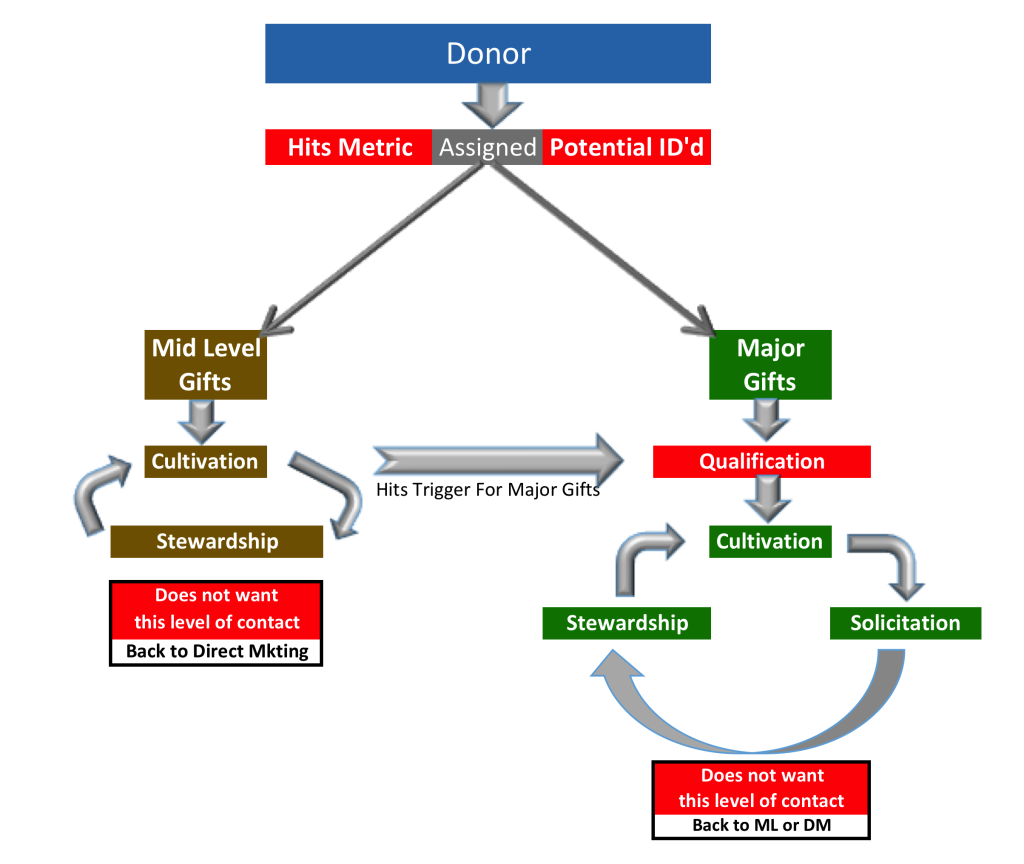1 min read
What Do Your Donors Experience? Part 2
Inmy last post, I talked about what it meant to have a strong brand for a non-profit. It’s giving your donors a great experience. Not just when they...
3 min read
Richard Perry and Jeff Schreifels : October 29, 2014

You have likely been in the situation where a current or new donor reaches the $500+ cumulative level of giving, and either the MGO drops everything to handle her, or the donor is handed off to someone who should not be dealing with donors – or the donor just sits in the system and stagnates.
These are not unusual situations, and we at Veritus Group often interact with ones just like this. When you boil down new donor management to its essentials, the two basic questions are:
In the next two posts I am going to address these two questions.
Of course, this discussion assumes you have some sort of a prospect identification system in place. It may be a dedicated staff member with a full array of research tools available to them, or a more basic system that triggers staff to pay attention to certain individuals that come your way. By “prospect system” I mean a process that attempts to discern capacity, interest and inclination of your donors.
But first a little side trip on definitions. Many of our colleagues in major gift fundraising call solid, long-term donors “prospects.” I don’t know where this practice originated or why it continues, because a prospect is NOT a donor. Nor is a donor a prospect.
The definition of a prospect is “a person regarded as a potential customer or donor” – emphasis on the word potential. They have not given yet. They are not donors. Jeff and I feel very strongly about this choice of words: if you regard a good donor as a prospect, you will be looking at them and treating them solely as a source of future revenue. And that is not good, for all the reasons we have explored many times in this blog.
Now by using the word “prospect,” if you mean that a current donor is a prospect for the major giving program, then I can understand the use of the word. For instance, if there is a donor who has given $650+ cume in the calendar year and some research has shown they have a great deal of capacity, then I could see the point that this donor is a “prospect” for the major gift program.
So we come back to handling that current or new donor who has reached the $500+ cume threshold. Here is the process we recommend:
This whole system of managing the current or new donor that reaches the $500+ cume threshold is meant to accomplish two things. First, if any of your donors has reached this level of cume giving, she requires more attention on your part. You need to increase the level of thanking and reporting back. Secondly, you need to have some sort of pipeline for major gifts, and this approach will accomplish that.
All of this falls in line with our thinking that more efforts and more investments in infrastructure (labor and systems) need to be put in place to care for these good donors who have shown they really do care about your cause. Be particularly alert and diligent to make sure this happens.
Richard

1 min read
Inmy last post, I talked about what it meant to have a strong brand for a non-profit. It’s giving your donors a great experience. Not just when they...
3 min read
Things are not going well for you as an MGO. You feel as though you are not managing your donors properly or, in many ways, you could be managing...
3 min read
We at Veritus Group are passionate about major gifts (you may have guessed that from the majority of our blog posts). About a year and a half ago, we...